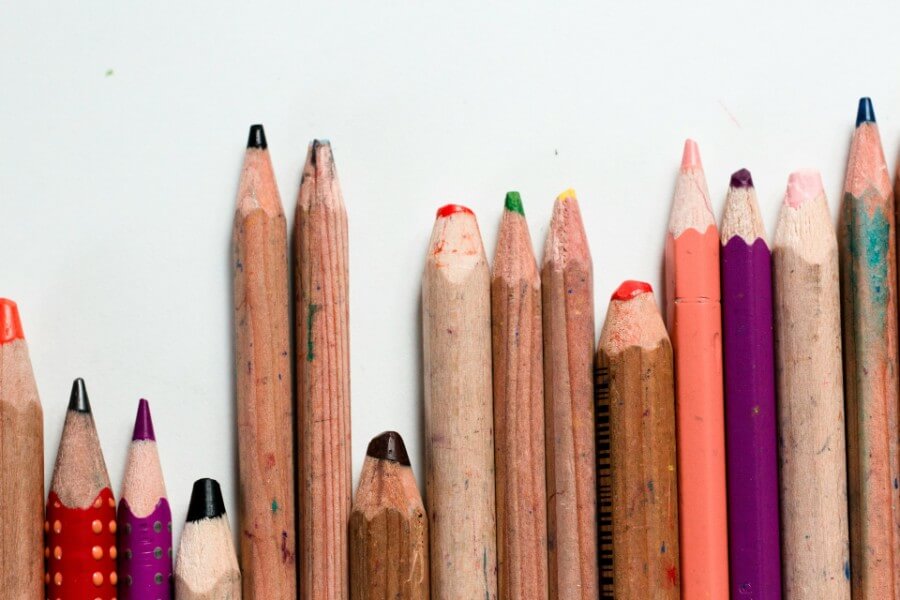
Graphic designers are the linchpins of visual representation. Businesses depend on graphic designers for a wide range of creative needs, including logos, websites, and branding.
From engaging content marketing and social media strategies to innovative web and mobile app designs and immersive virtual and augmented reality experiences, skilled graphic designers play a crucial role in crafting captivating brand experiences.
According to a study by PRNewswire, 94% of people believe their first impression of a company is design-related, and nearly 46% determine a business or company’s credibility based on the design of its website. Piktochart reports that 81% of business organizations use graphic design in various formats. These statistics highlight the critical role graphic designers play in modern-day business.
10 Essential Graphic Design Skills to Master in 2024
The field of graphic design is rapidly evolving. It is essential for graphic designers to master in-demand skills to create visually captivating designs that resonate with audiences. Designers must elevate their work’s emotional impact and uniqueness to stay competitive. This article will guide you through the essential graphic design skills needed to ensure proficiency in 2024.
Graphic designers must master many software tools to succeed. They need to know Adobe Illustrator, Photoshop, InDesign, Canva, Sketch, Figma, GIMP, Pagemaker, and CorelDRAW inside out. Designers should understand how each program works and use them well in their projects. They must also watch their spending and handle costs to create great work without breaking the bank.
Colors can stir up many feelings, making them useful in graphic design. Graphic designers must learn color theory. This knowledge lets them purposefully use colors to affect people’s feelings and thoughts. Designers can then make eye-catching stuff, logos, and designs that get their point across. This helps brands look better and connect with people more.
Alignment and layout are like the secret weapons of graphic design, working behind the scenes to bring everything together in perfect harmony. They’re the magic touch that gives a design its visual appeal and makes it stand out. Whether it’s text, images, or shapes, a designer who knows the power of alignment and layout can create mesmerizing visual effects that draw the viewer in, guiding their gaze through a stunning and cohesive composition.
Typography plays a significant role in shaping the visual hierarchy of design. Through a thoughtful selection of typefaces, designers can establish a unique brand identity and personality that resonates across different mediums, be it print materials or digital interfaces. The choice of typography contributes to setting the visual tone of the work and effectively conveys messages to the audience, making it an integral element of design. Whether used in marketing materials, corporate presentations, or packaging, well-considered typography improves readability and reinforces the brand’s message.
Creativity is the spark that ignites innovation. A designer who can combine existing knowledge, skills, and experiences to craft unique and valuable content captures attention and brings visual concepts to life. To enhance creative skills and delve into new areas of visual storytelling, organizations can invest in corporate animation training courses for their design teams. Learning advanced animation techniques can help designers push beyond their conventional boundaries, discover new possibilities and develop innovative solutions that drive business growth.
Keen attention to detail is crucial in graphic designing. Even the tiniest error, such as a misaligned text box or an inconsistent color shade, can significantly impact the overall outcome of a project. For instance, a designer working on a company logo must ensure that every element, from the font style to the spacing between letters, is perfect. A designer’s ability to recognize and address such minute details demonstrates their precision and accuracy.
Effective time management is essential for upholding an excellent professional reputation. A graphic designer must juggle various tasks to exceed client’s demands and meet tight deadlines. By strategically organizing the design process and utilizing tools like design sprints and automation, designers can boost efficiency and reduce time spent on routine tasks. Furthermore, stellar time management enables designers to strike a balance between work and personal life, resulting in higher work quality and lower stress levels.
A graphic designer works closely with clients every step of the way, from the initial spark of inspiration to the electrifying final execution. Collaborative feedback and brainstorming sessions ensure that work constantly moves in the right direction. This innovative approach guarantees that the end result harmonizes with the client’s brand, resonates with their goals, and captivates their audience.
The design field is constantly emerging with new trends and technologies. Graphic designers must prioritize ongoing learning to remain at the forefront of their industry. Adopting cutting-edge tools and software, nurturing creativity, and diversifying their skill set enable designers to meet clients’ evolving demands and explore new avenues for business growth. Whether it’s mastering the latest graphic design skills, engaging in knowledge-sharing with fellow professionals, staying abreast of industry developments, or participating in corporate graphic design training courses, there are boundless opportunities for professional growth and advancement.
As clients’ needs evolve and design trends transform, graphic designers must stay agile to thrive and succeed. Technological advancements constantly shape the graphic design landscape, and designers must eagerly embrace these changes to stay ahead. A graphic designer who stays on top of industry trends should regularly embrace new tools and software, exploring and incorporating them into their workflow.
Conclusion
In conclusion, mastering these essential skills enhances your team’s creative output, sets you apart in the market, and ensures your designs resonate with your target audience. Integrating complementary services such as photo editing can significantly elevate your projects. Comprehensive photo editing services allow you to refine images, ensuring they seamlessly align with your design vision. With the capabilities ensured by the graphic designing skills covered in this blog, clients are provided with a one-stop solution for all their visual content needs, enhancing work’s overall quality and cohesiveness and demonstrating a commitment to delivering innovative design solutions.